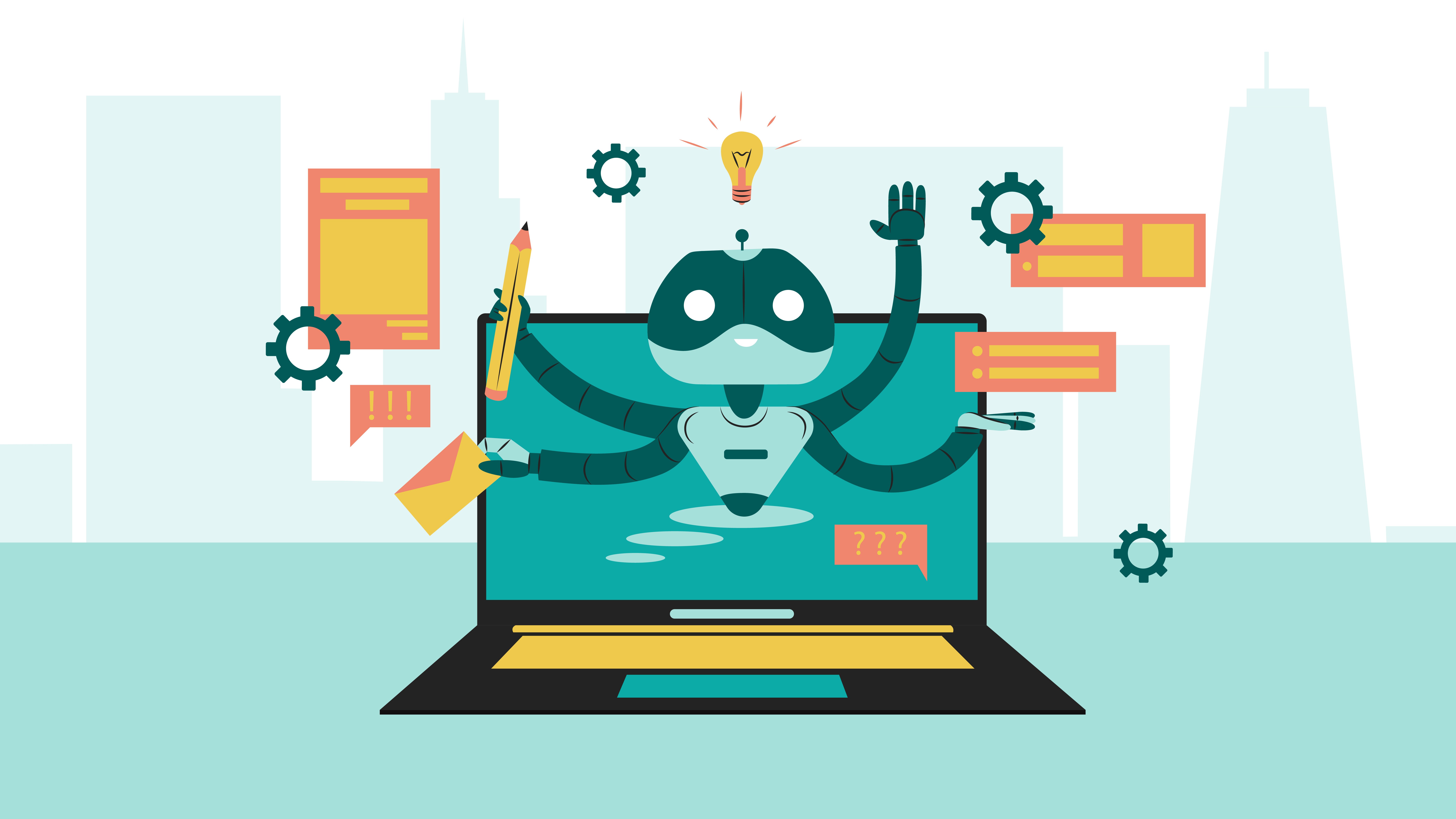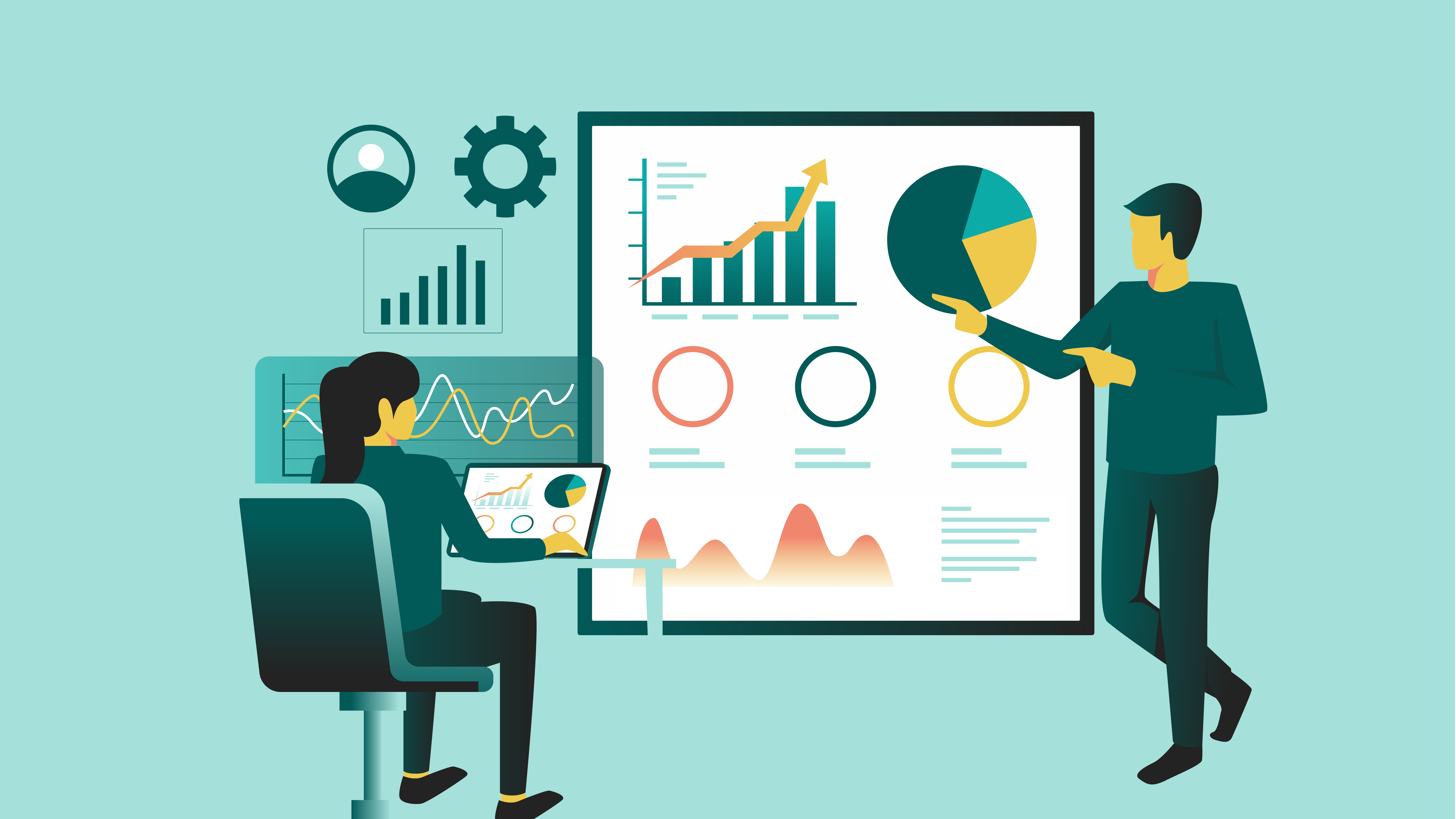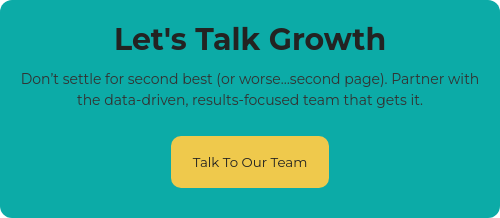In 2023, the SaaS market grew significantly to an estimated $273.55 billion, a 13.69% increase over 2022. Alongside this growth, we saw notable changes in buyer behavior, the adoption of AI, and the rise of thought leadership. We break down these three trends and share tactics to help you adapt to each one so your company can evolve with your users and see success in 2024 (and beyond). Let’s dive in.
1. Buyer Behavior Is Shifting

Driven by various economic and societal factors, buyer priorities and preferences are evolving — reshaping how businesses, especially in the SaaS sector, need to approach their strategies.
One of the most striking changes is in spending habits, affecting both individuals and businesses alike. A staggering 92% of Americans are tightening their belts, leading to a reduction in their overall personal and corporate spending. This trend is even more pronounced when we look at nonessential goods. A remarkable 80% of consumers have slashed their spending in this category, a dramatic increase from 47% in 2022. This data underscores a fundamental shift in how individuals and companies prioritize their expenditures in response to the evolving economic landscape.
At the same time, there's a growing emphasis on corporate social responsibility. In the future, users will continue to demand more from the brands they engage with beyond just the product's functionality. In a survey conducted by IBM in 2022, 51% of respondents said that sustainability is even more important than it was in 2021 — and that number is only going up. This year, 84% of consumers say that sustainability is a very important factor in their purchase decisions.
Moreover, decision fatigue has become — and remains — a prevalent challenge. Since 2020, decision fatigue has been on the rise in the U.S., with the pandemic making even mundane decisions, such as deciding whether to dine out or visit friends, more stressful and laden with potential consequences. According to the American Medical Association, by the time the average person goes to bed in 2023, they've made 35,000 decisions — and they don’t want to make one more.
Each of these shifts presents both challenges and opportunities for SaaS companies. The following sections explore how your company can adapt and thrive — along with your customers.
Find Ways to Engage (And Re-Engage) Your Customers
As consumers cut back on non-essential spending, your call to action is clear — now more than ever, your product needs to remain indispensable to your customers. Pay close attention to customer feedback, align your product roadmap and new feature releases with customer preferences, and find creative ways to re-engage inactive users.
By reigniting their interest and increasing their engagement, you can significantly reduce the risk of churn — and make your product an essential part of their daily routine.
Authentically Align With Charitable and Sustainable Initiatives
As consumers continue to opt for brands that demonstrate charitable and sustainable practices, it’s important to align your SaaS company with those same causes — this is something Expensify does extremely well. Building off an early idea from their founder, David Barrett, to use pre-loaded gift cards and technology to offer funds for houseless individuals to purchase food, Expensify.org was born.
Brands that not only embrace social and environmental responsibility but actively support and fund these initiatives will not only help the world at large but will earn customer loyalty and attract like-minded users. Who doesn’t like improving brand image while improving the world?
Make Product Sign-Up Frictionless
Now more than ever, decision fatigue is a deterrent to people signing up for your product. With so many solutions available for any one problem, consumers often get stuck in the research cycle — Googling and re-Googling options until they ultimately give up.
Around 90% of SaaS buyers start their journey with an online search, and over half are significantly through the decision-making process by the time they engage with vendors — but that’s where they get stuck. When users meet your brand, they will either quickly engage or quickly disengage, depending on what they find.
So, what does this mean for you? If you haven’t already adopted a PLG model, now is a great time to start. This approach places a focus on clear, concise, and compelling messaging. Your online presence should immediately convey the unique value proposition of your product, emphasizing how it solves the user's specific problem more effectively than competitors.
Additionally, offer a seamless and frictionless trial or signup experience that allows users to experience the benefits of your product quickly. Personalized demos, engaging onboarding processes, and easy access to information can make a significant difference in converting a researcher into a loyal customer. Remember, in a crowded market, clarity, simplicity, and immediate value are key to capturing and retaining users.
2. AI Is Everywhere

In a recent survey, 77% of SaaS companies had either launched AI features or had AI on their product roadmap in 2023.
SaaS companies are also using AI to streamline internal processes, enrich user experiences, and enhance nurture programs. From AI-driven personalization to predictive analytics for better decision-making, the potential is, frankly, unlimited. Leveraging these tech advancements means your product doesn't just meet user expectations — it anticipates and exceeds them, paving the way for a new era of user-centric, intelligent products.
Let’s break down a few ways to use technology to enhance your PLG strategies and user experience.
Use AI to Personalize at Scale
In today's market, personalization is key. Seventy-six percent of consumers say they're more likely to purchase from brands that personalize, and 78% say they're more likely to recommend brands that personalize. This is up from 73% in 2022.
However, personalization should not be limited to the product experience alone. It should be integrated into every aspect of the customer journey. AI can be leveraged to suggest relevant product features to users based on their past interactions, enhancing the usability and appeal of the product.
Beyond the product, AI-driven personalization should extend to nurture programs, ensuring that each communication a user receives is tailored to their interests and stage in the customer journey. Similarly, onboarding programs can be customized to guide users through features most relevant to them, making the learning curve more manageable and engaging.
And personalized advertising, informed by user activity and preferences, can significantly boost the effectiveness of marketing efforts. This multi-faceted approach to personalization, powered by AI, ensures a comprehensive and satisfying experience for the user.
The key takeaway is clear: Investing in AI algorithms that learn from user interactions and apply these insights across product features, nurture/onboarding programs, and advertising can significantly elevate the user experience. This not only boosts user satisfaction but also fosters a deeper sense of brand loyalty. After all, a brand that knows its users well is a brand that users will return to time and again.
Use Predictive Analytics for Proactive Decision-Making
Ever wish you had a crystal ball for your company? From market downturns to ineffective ad spend, there are so many ways that knowing the future could help your company stay ahead of the competition. This is where predictive analytics comes into play.
Predictive analytics, which has grown increasingly significant in recent years, leverages historical data and analytical techniques like data mining, machine learning, and statistical modeling to forecast future trends and behaviors. Its essence lies in providing businesses with informed predictions about what’s going to happen in the future — a capability that's become more powerful due to the surge in data volumes, enhanced computing power, and the availability of user-friendly software.
AI automates and refines data analysis, handling large and complex datasets more efficiently than manual methods. It can identify subtle patterns and relationships within the data that might be overlooked otherwise. AI-driven models can also adapt and improve over time as they process new data, leading to increasingly accurate predictions. This streamlines the predictive modeling process and opens up new possibilities for deeper insights and more precise forecasting — helping you get ahead and stay ahead.
Enhance Customer Service With AI
One thing about users today? They’re all about instant gratification. If they need something, they need it now — or they’ll go somewhere else to find it.
This is where AI chatbots come into play. AI chatbots have been a staple in customer service for a while, but recent advancements have significantly evolved their capabilities. They’re no longer just pre-programmed, basic response tools — they’ve transformed into sophisticated systems capable of understanding and responding to customer queries in a more personal, human way.
This evolution means that the once-tedious task of manually inputting conversation scripts and building bot flows is being replaced by AI's ability to learn and adapt to user interactions dynamically. When users have questions, AI-powered chatbots are immediately available, which means no more lengthy hold times waiting for customer service reps and no more wasting time scouring an FAQ page for some semblance of an answer.
Chatbots are highly efficient, quickly resolve customer queries, and provide consistent customer interactions, promoting seamless communication. And customers are becoming more and more open to the idea of AI assistance; 69% of customers say they’re willing to interact with a bot on simple issues, a 23% increase from last year.
AI chatbots have been a game-changer in helping SaaS and PLG brands provide value and enhance brand loyalty and trust while collecting handy user data. For example, companies like Zendesk are integrating AI into their customer support platforms, offering instant, personalized assistance while gathering valuable data to continuously improve the service.
3. Thought Leadership Is Key

In a crowded market, establishing brand authority and trust through thought leadership is not just beneficial; it's crucial. Today, 64% of decision-makers say that an organization’s thought leadership content is a more trustworthy basis for assessing its capabilities and competency than its marketing materials and product sheets — and that’s up from 55% in 2020. Moreover, 60% of consumers report that thought leadership directly led them to buy a product or service they weren't previously considering.
The SaaS space, brimming with innovative ideas and technologies, faces the dual challenge of cutting through market noise and proving product value in a rapidly evolving industry. Yet, effectively leveraging thought leadership can transform these challenges into opportunities to influence and shape industry dialogue. Here’s how you can do it.
Take Advantage of Thought Leadership Ads
You’re likely already investing in paid advertising of some kind — but now it’s time to financially back and promote your thought leaders. After all, 76% of users prefer to engage with a product if they have a personal connection to the brand, and 54% of decision-makers say they spend more than one hour per week reading and reviewing thought leadership.
LinkedIn is a great place to start pushing these ads. Promote key individuals in your organization to drive conversations in your industry and boost traffic — building a following directly on the platform where professionals connect, learn, and make decisions. Tailor your ads to initiate discussions, ask questions, and encourage LinkedIn users to think differently about prevailing industry trends — establishing your brand as a driving force in your space.
Create Valuable and Relevant Content
The tricky part about thought leadership? It has to be done well. 49% of buyers said their opinion of a company decreased after reading low-quality content, and a third removed a company from consideration based on its thought leadership output.
Producing valuable and relevant content is essential for a well-executed thought leadership strategy — and for fostering brand awareness and trust. Quality content educates your audience, addresses their challenges, and positions your brand as an authority.
For example, Chili Piper, an inbound lead conversion and scheduling app, uses video to capture and share their expertise. They transform interviews, company insights, and thought leadership conversations into compelling, digestible content that resonates with audiences and establishes industry authority.
How Will You Keep Up With These SaaS Trends?
In an ever-changing marketplace, nothing stays the same for too long. As a SaaS brand, it can be tricky to keep pace with the competition without the right support. That’s where First Page Strategy can help.
We’re a non-traditional growth marketing agency that uses data and big ideas to create exponential growth for SaaS and PLG brands like yours. Whether you need to build a thought leadership strategy, create personalized programs with AI, or optimize your signup flow — we’ve got you covered.
Book a call with our team today to get started.







